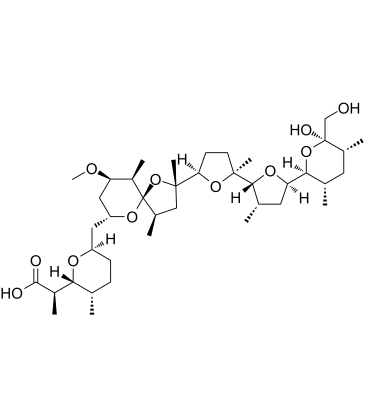Nigericin |
| Catalog No.GC39719 |
K+/H+ ionophore,promoting K+/H+ exchange across mitochondrial membrane
Products are for research use only. Not for human use. We do not sell to patients.

Cas No.: 28380-24-7
Sample solution is provided at 25 µL, 10mM.
Nigericin is an antibiotic derived from Streptomyces hygroscopicus that act as a K+/H+ ionophore, promoting K+/H+ exchange across mitochondrial membranes[1].Nigericin can be a NLRP3 activator that induces the release of IL-1β as a NALP3-dependent manner[2]. Nigericin triggers eryptosis, an effect paralleled by ROS formation, and in part due to induction of oxidative stress. Nigericin triggers apoptosis[3].
[1]. Zotova L, et al. Novel components of an active mitochondrial K(+)/H(+) exchange. J Biol Chem. 2010 May 7;285(19):14399-414. [2]. Mariathasan S, et al.Cryopyrin activates the inflammasome in response to toxins and ATP.Nature. 2006 Mar 9;440(7081):228-32. [3]. Bissinger R, et al. Triggering of Suicidal Erythrocyte Death by the Antibiotic Ionophore Nigericin. Basic Clin Pharmacol Toxicol. 2016 May;118(5):381-9.
Average Rating: 5 (Based on Reviews and 14 reference(s) in Google Scholar.)
GLPBIO products are for RESEARCH USE ONLY. Please make sure your review or question is research based.
Required fields are marked with *




